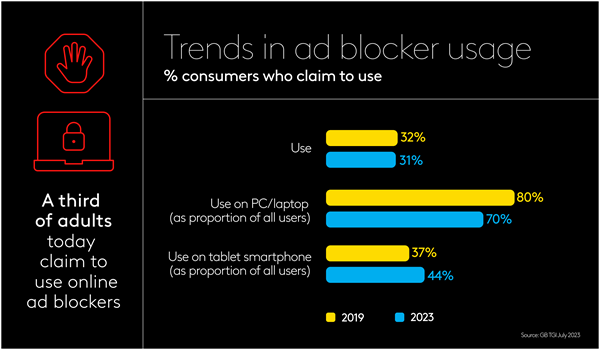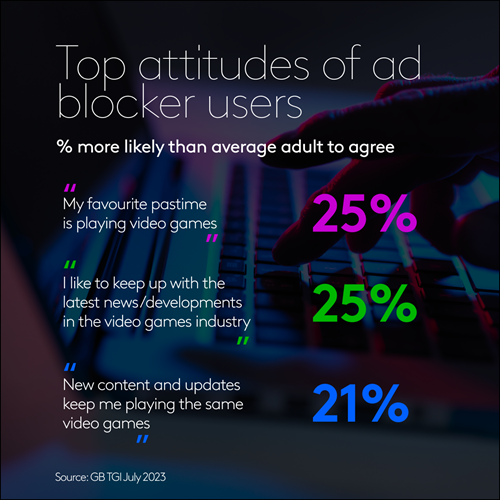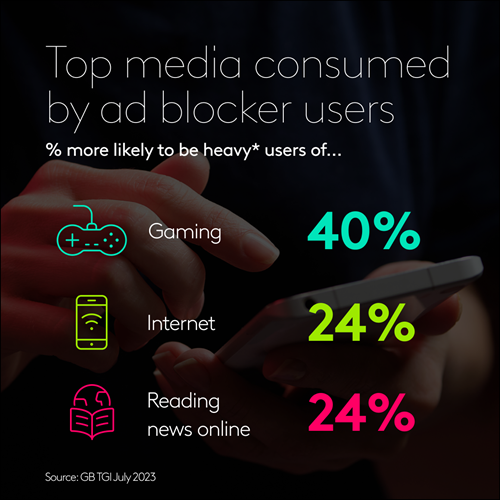Who uses ad blockers today and what sets them apart from other consumers?

Four or five years ago a wave of anguish swept across the online advertising community, prompted by more and more consumers using ad blockers and thus undermining the business model of online content providers.
A number of media owners have fought back by, amongst other strategies, blocking content for those who are using ad blockers. Indeed, recently YouTube began an experiment restricting to just three video views those who do not toggle off their ad blockers whilst on the platform.
But what is the wider picture of ad blocker usage today and how has the trend evolved in recent years? GB TGI reveals that today 31% of adults (16.5 million people) claim to use ad blocking software. In recent years this figure has remained fairly static, although this masks fluctuations in which devices ad blockers are being used on.
Four years ago 84% of ad blocker users claimed to have the software on their PC or laptop, whilst 37% had it on their tablet or smartphone. But the figures today are 70% and 44% respectively, showing a distinct shift in where consumers are prioritising ad blocker usage.

British consumers are broadly in line with the average adult globally when it comes to likelihood of using ad blockers. Our TGI Global Quick View data, which covers 35 markets worldwide, reveals that – at one end of the spectrum – claimed usage of ad blockers stands at 48% of adults in China. However, at the other extreme, just 20% of adults in Italy say they use ad blockers.
Formerly, we might have seen ad blocker usage as something Britain’s younger consumers were most likely to do. However, today no particular age group or indeed life stage is significantly more likely than the average adult to use ad blockers. Indeed, there are even few differences by attitudes between ad blocker users and consumers as a whole, although engagement with video games is a notable exception.

This engagement with video games is reflected in media consumption trends, with ad blocker users 40% more likely than the average adult to be amongst the heaviest 20% of consumers of gaming.
They are also more likely than the average adult to be heavy consumers of internet and online news content.
